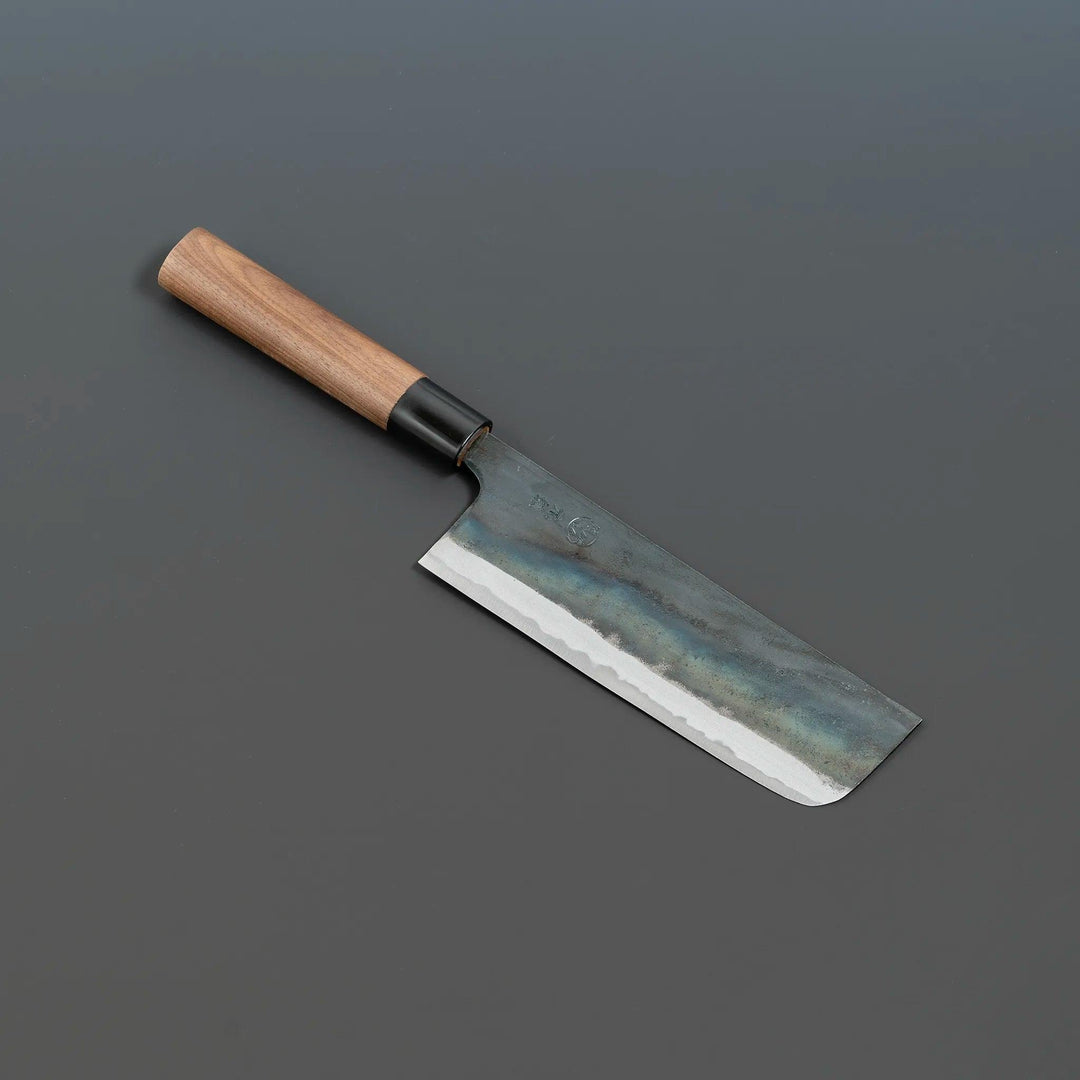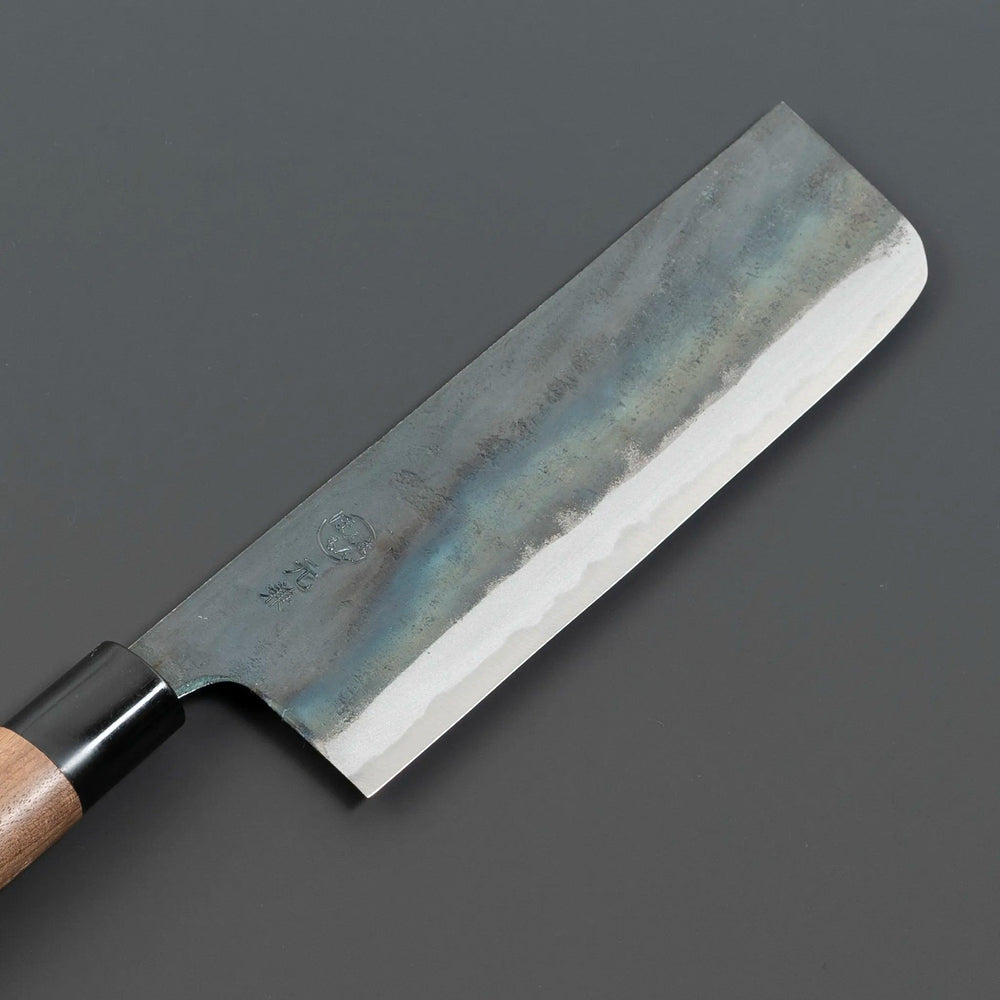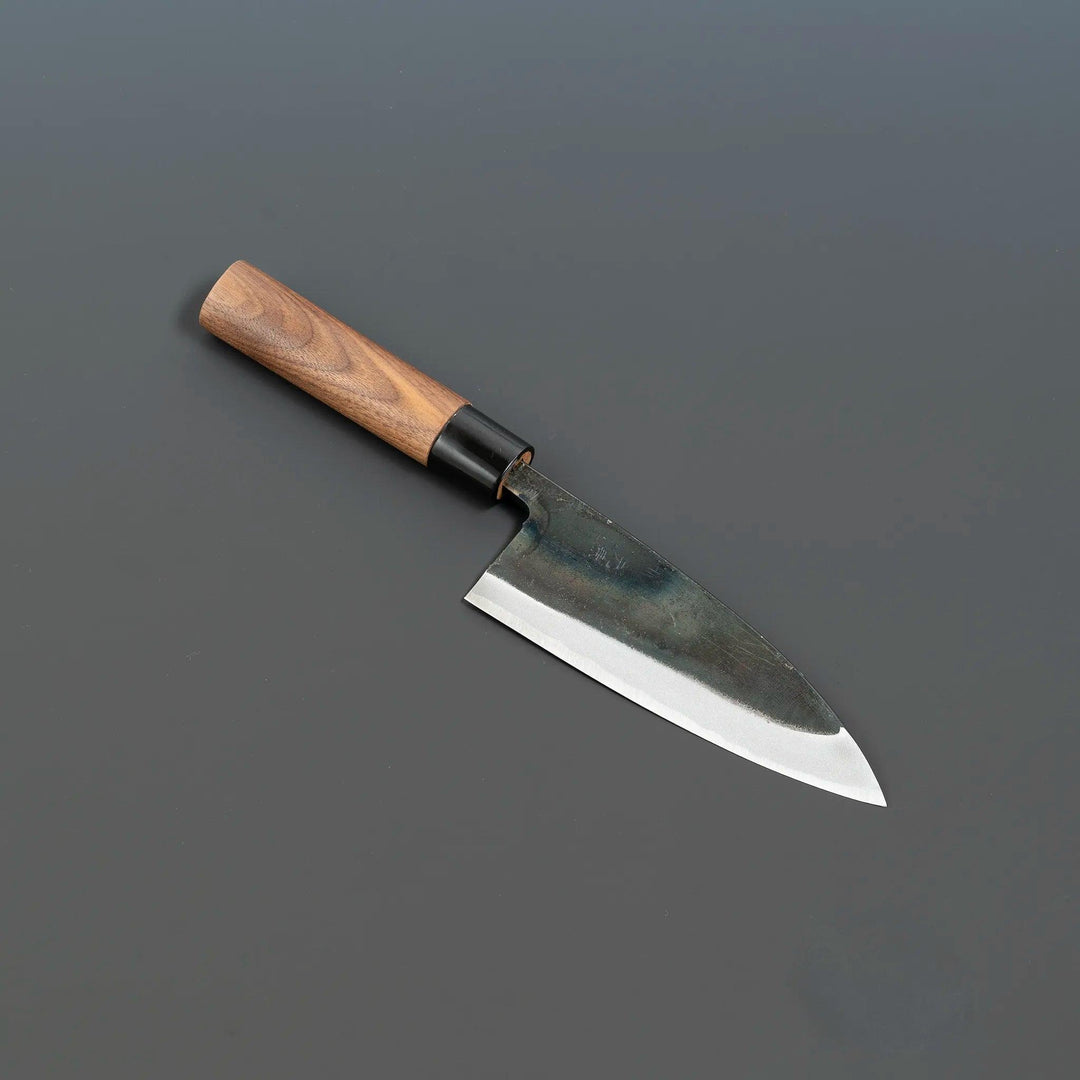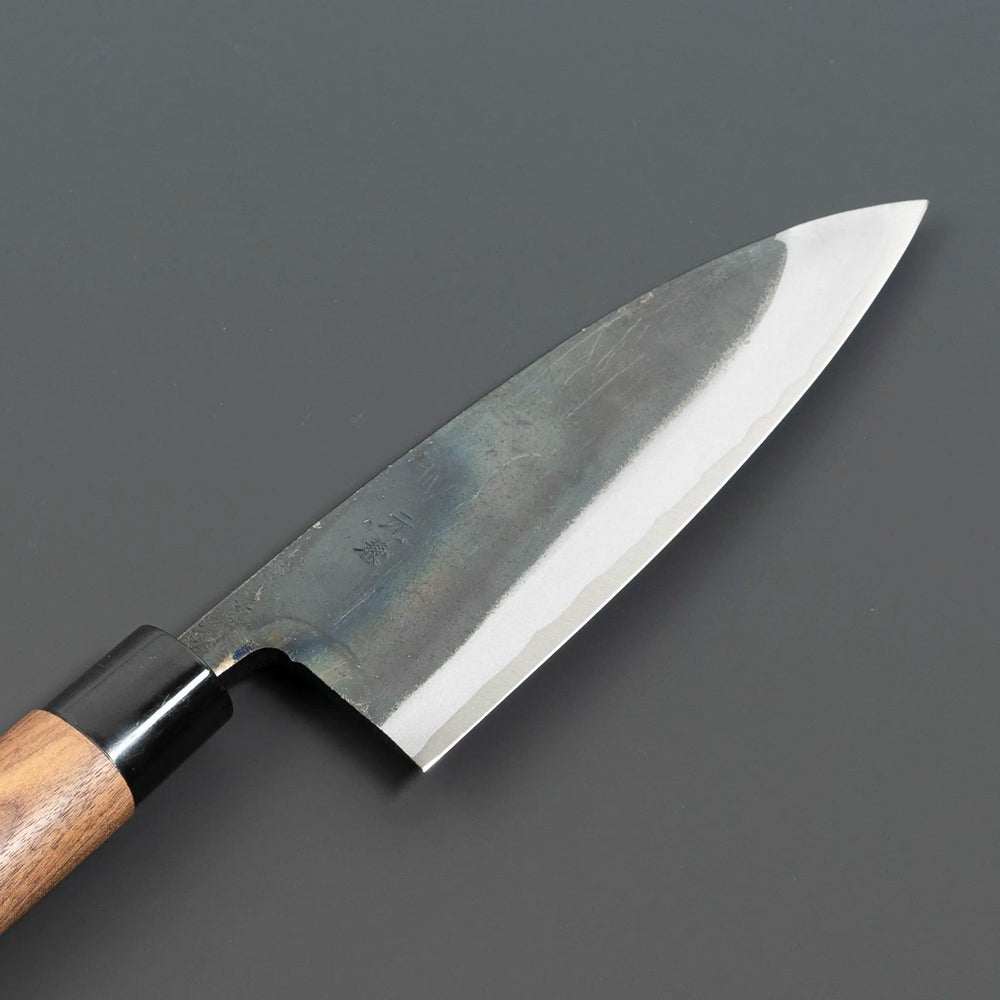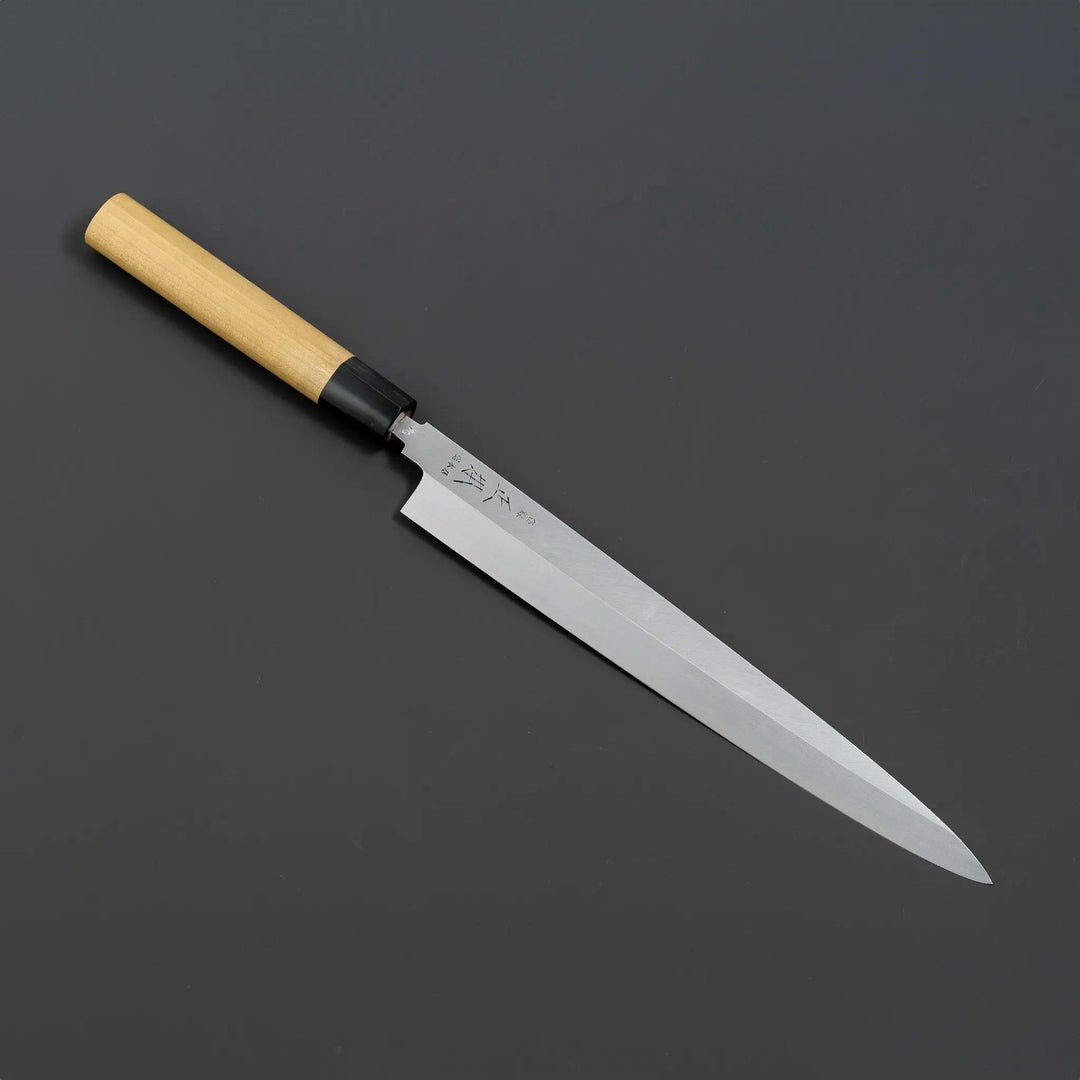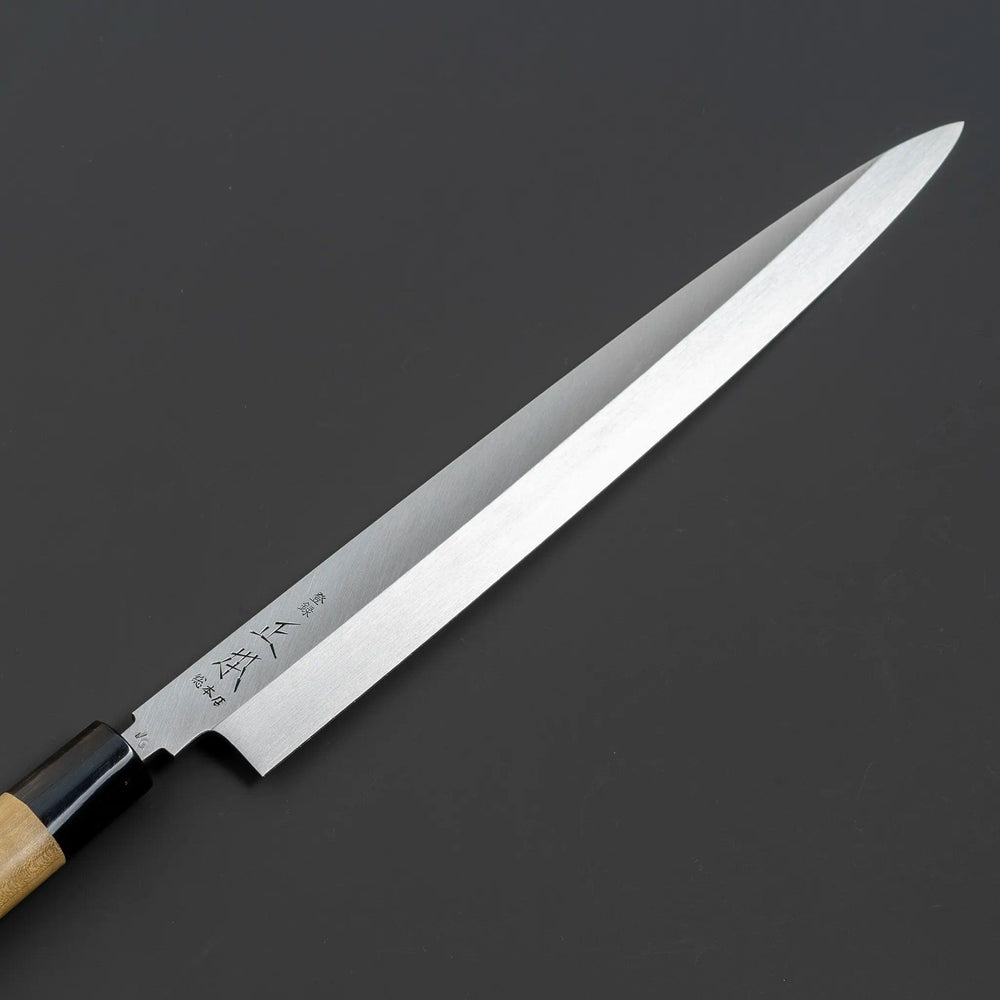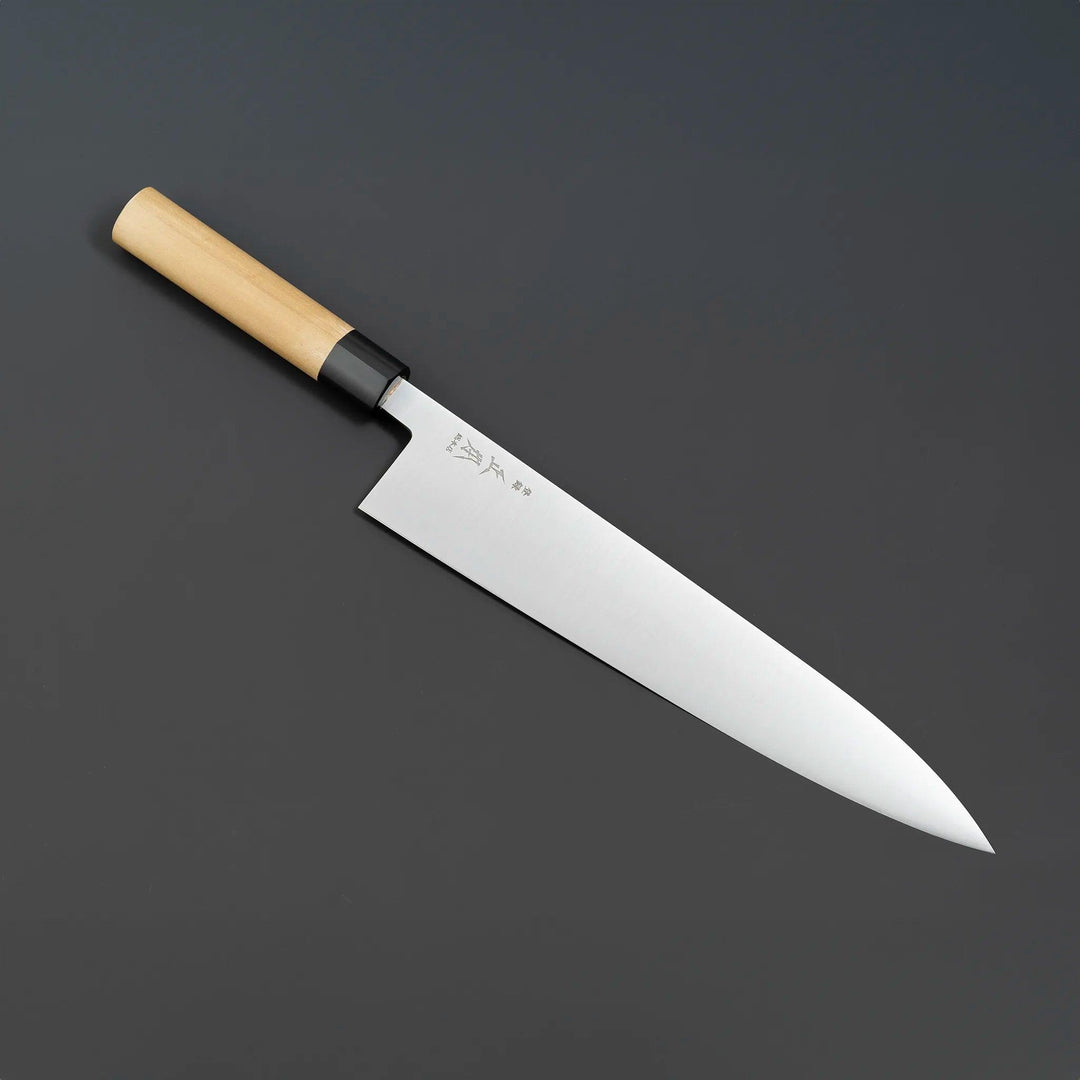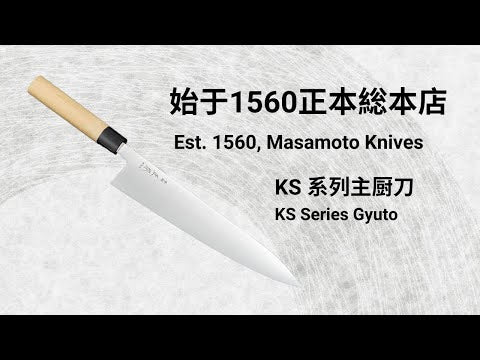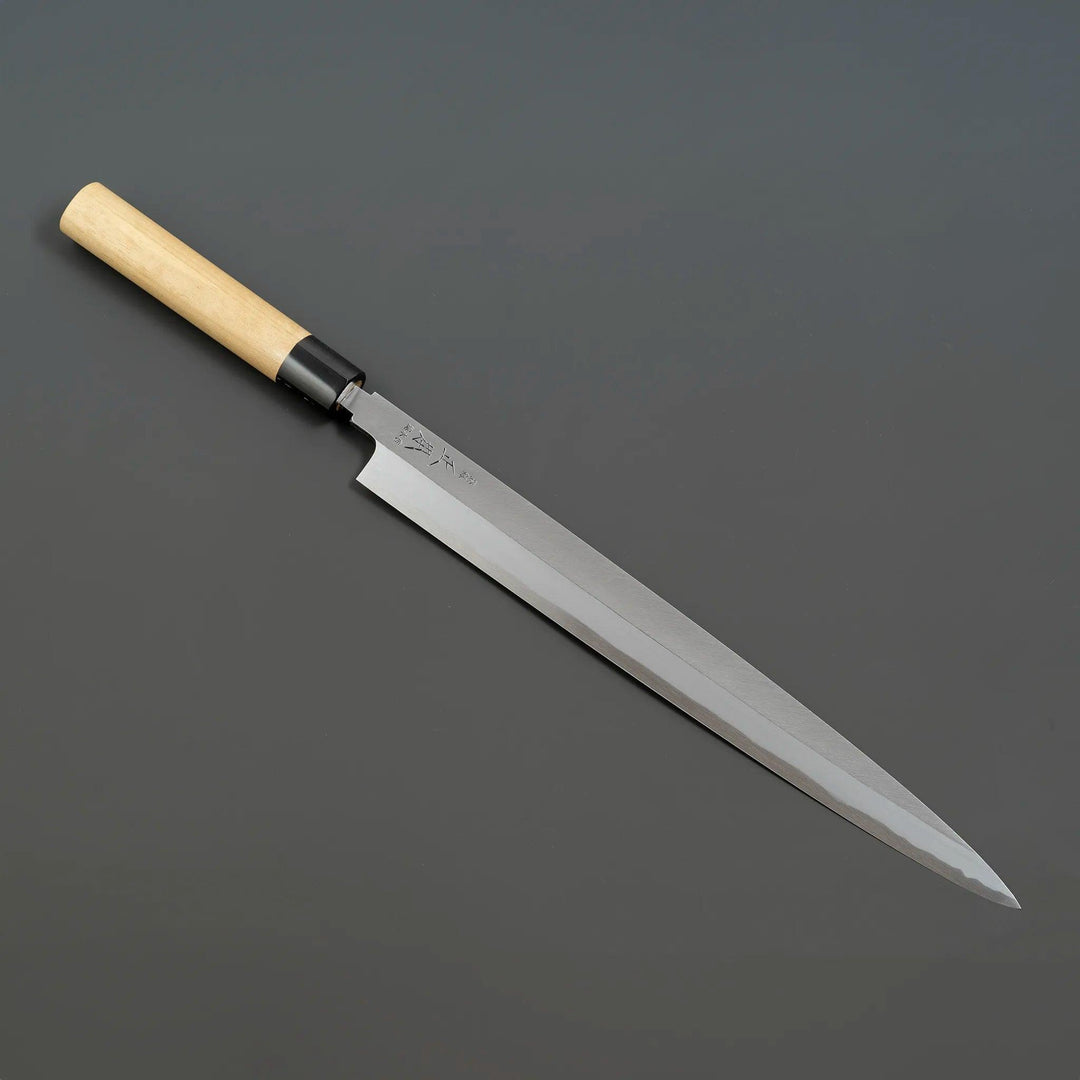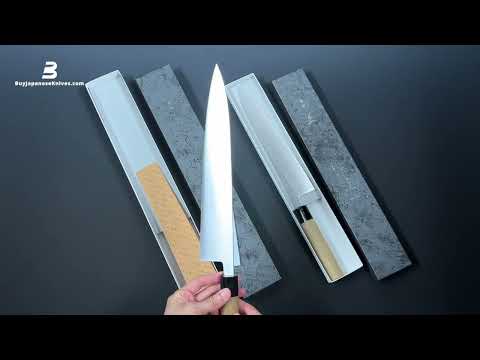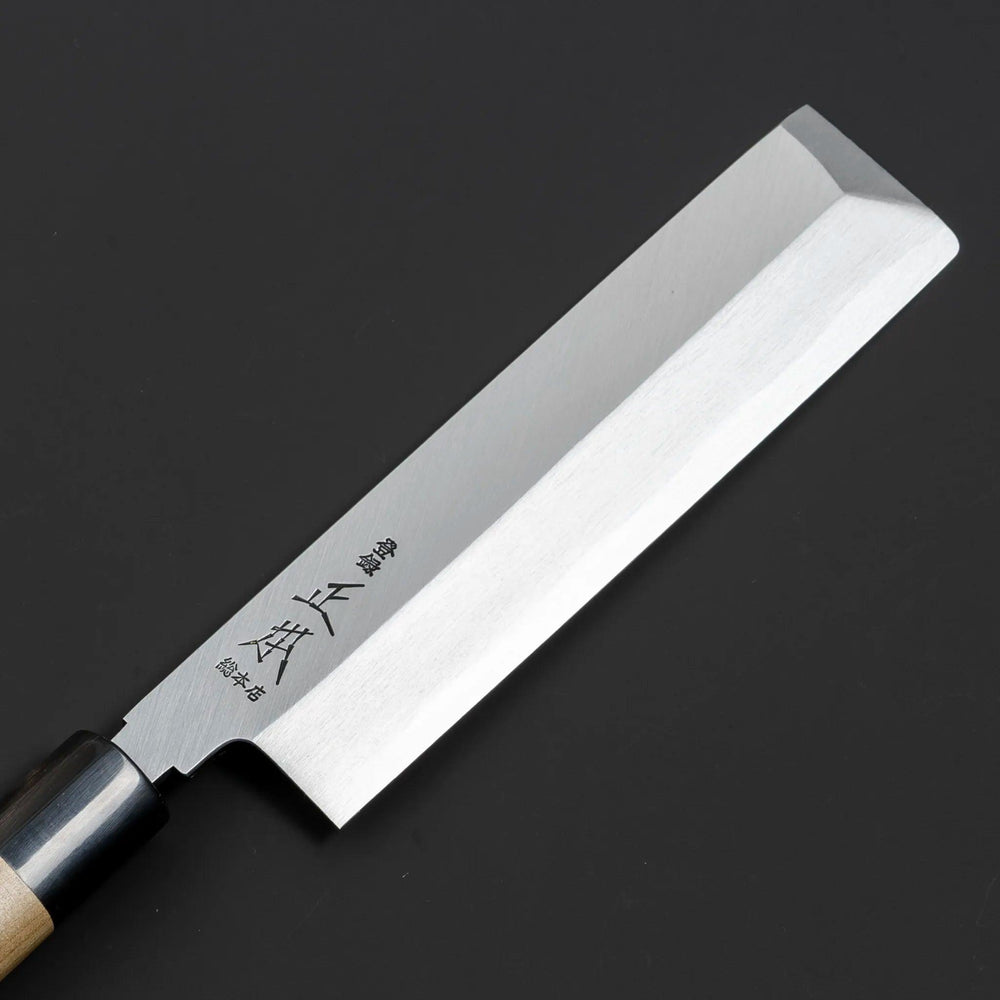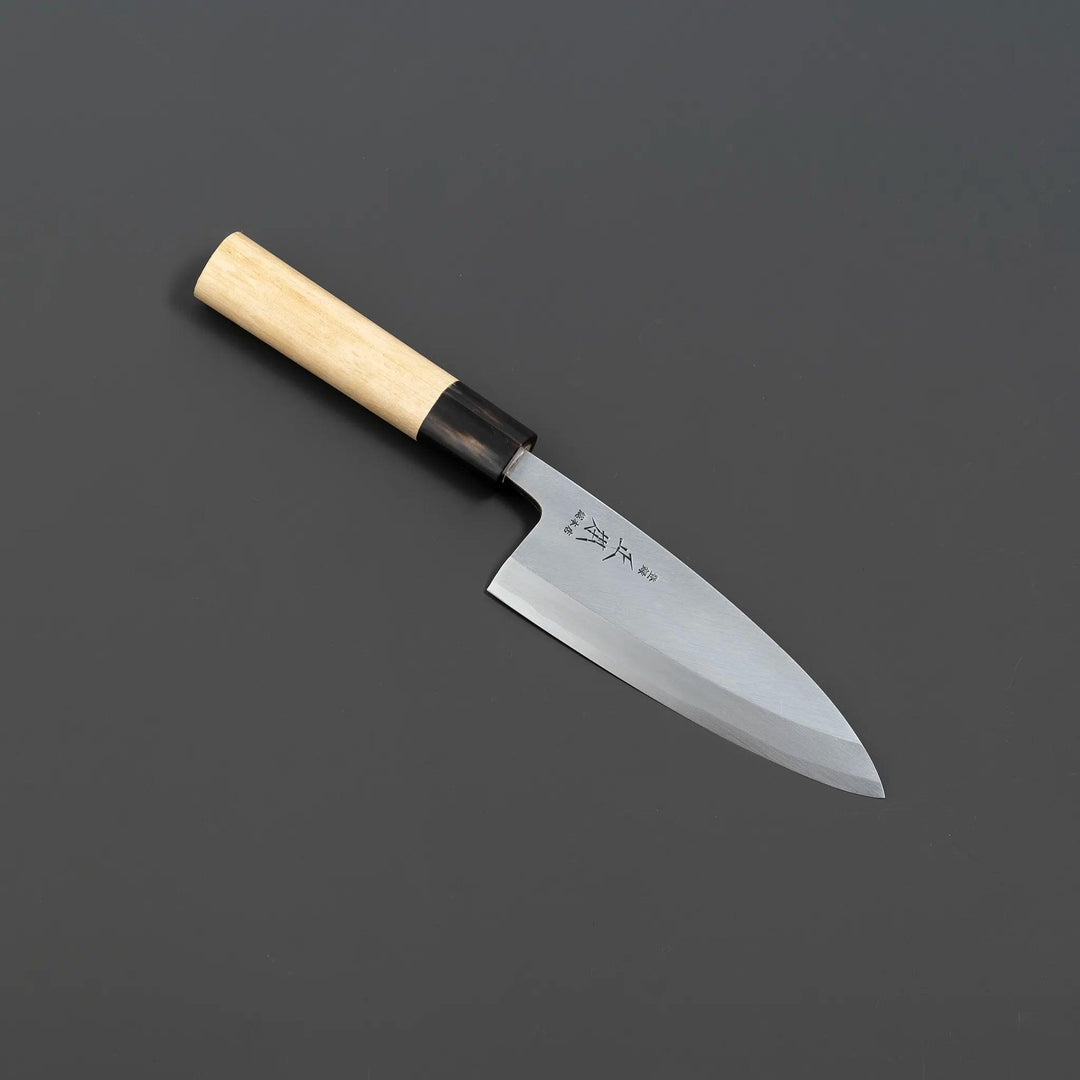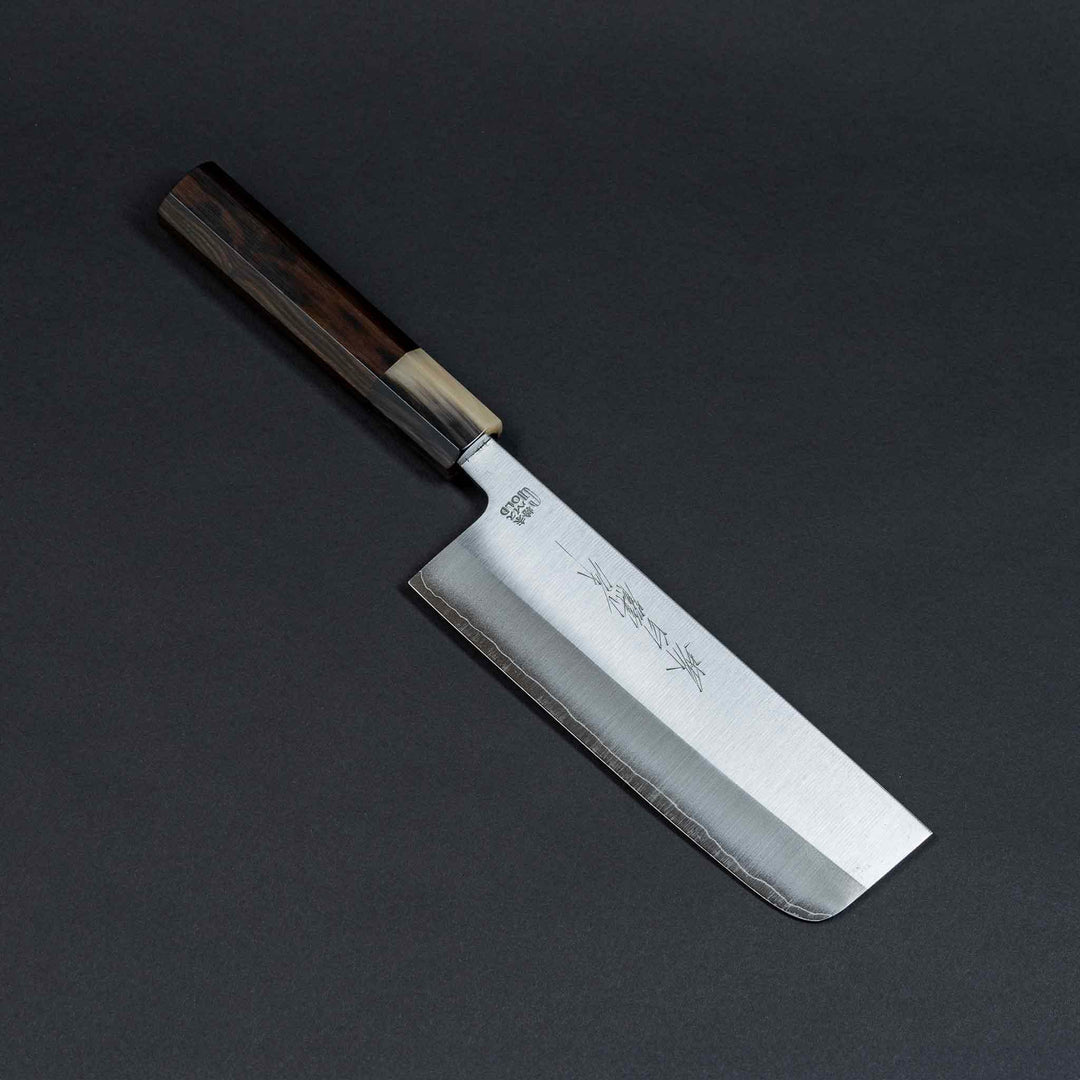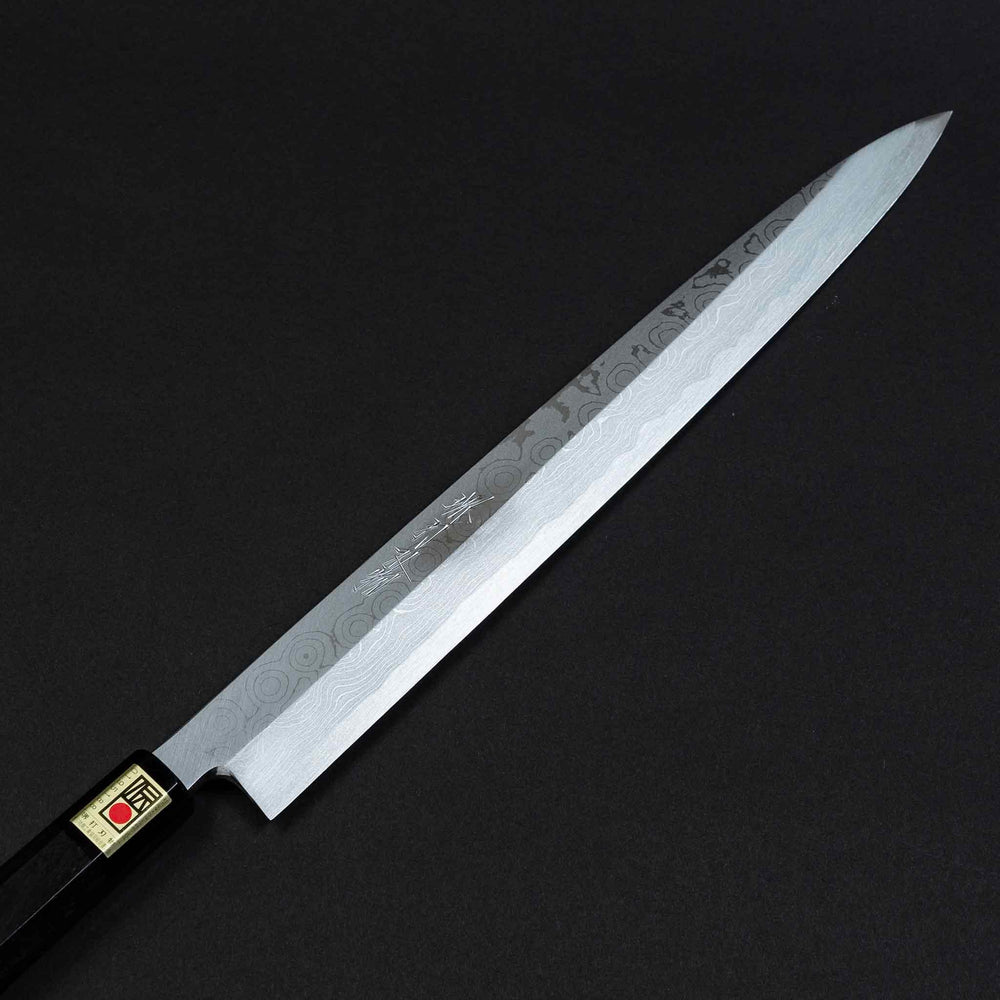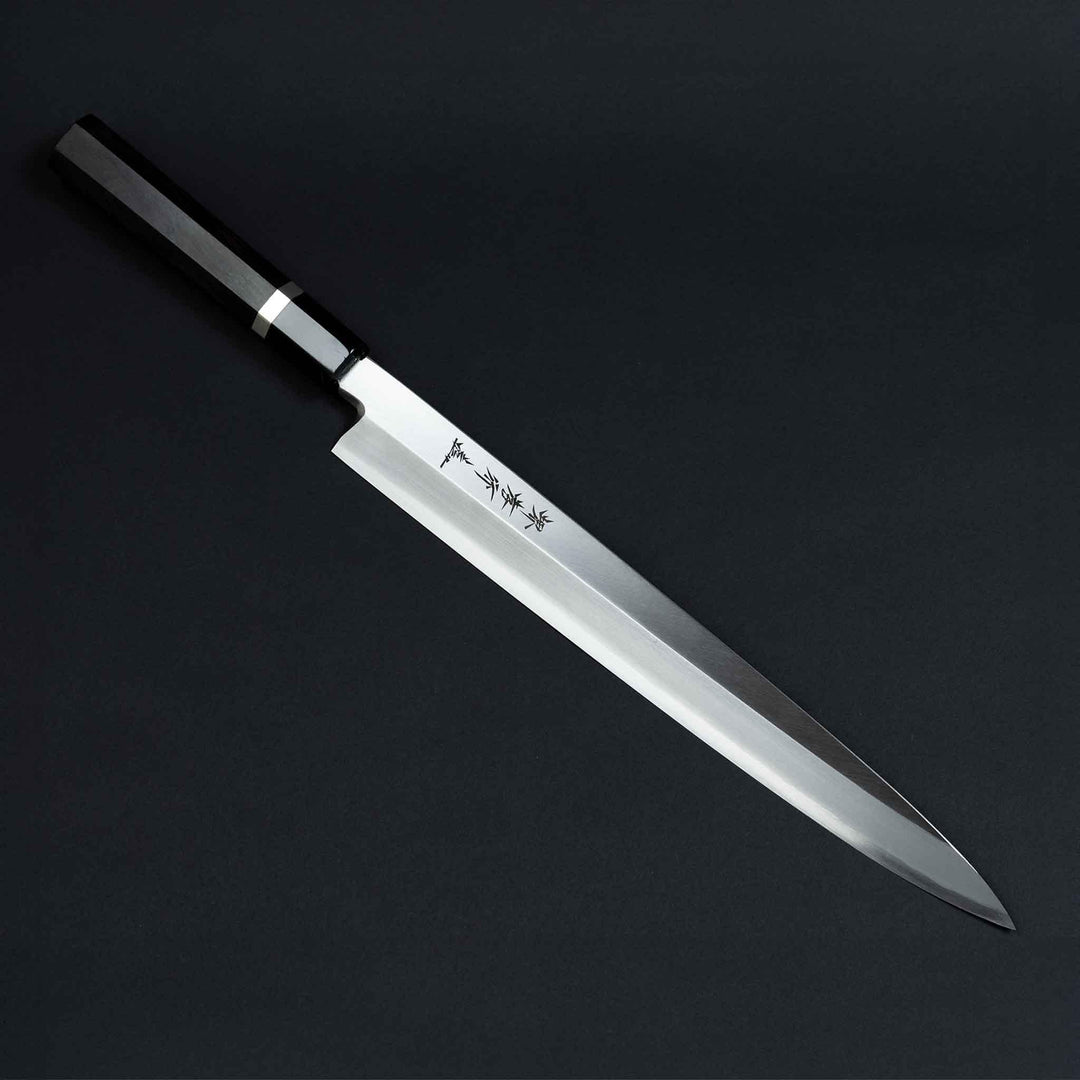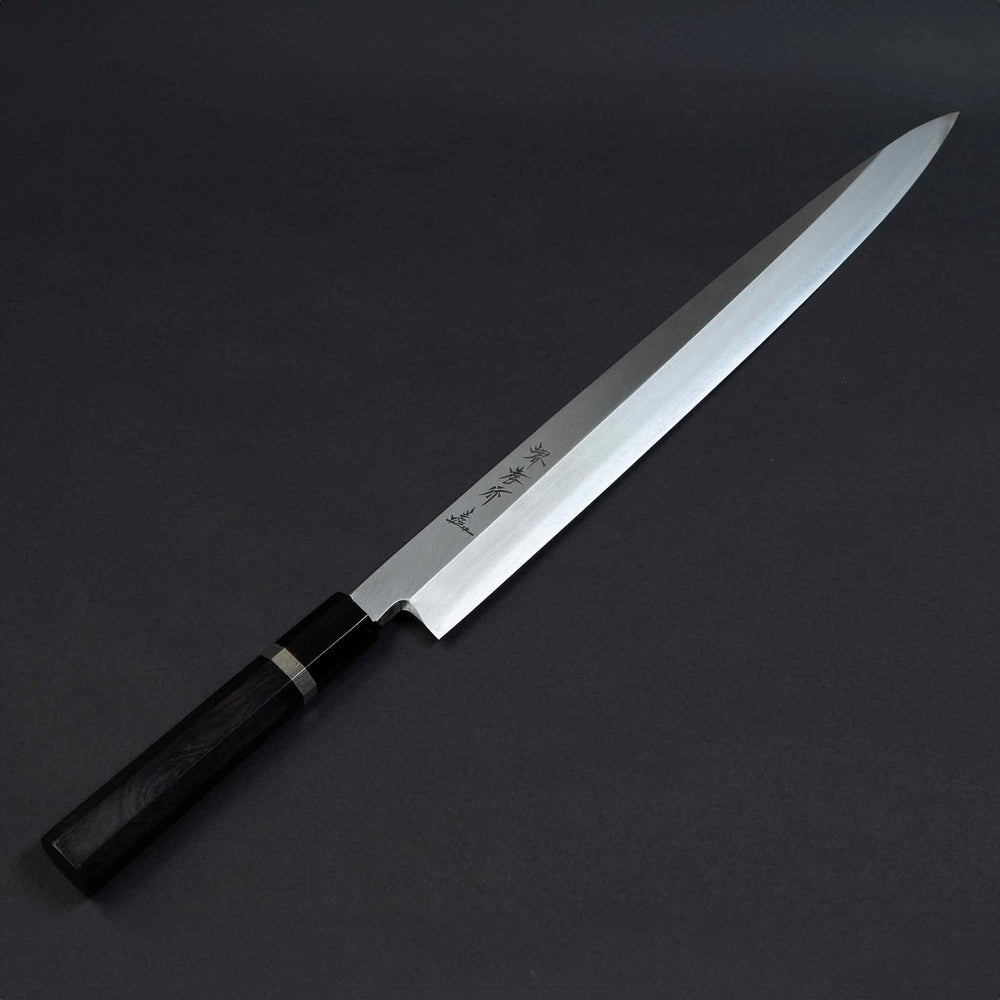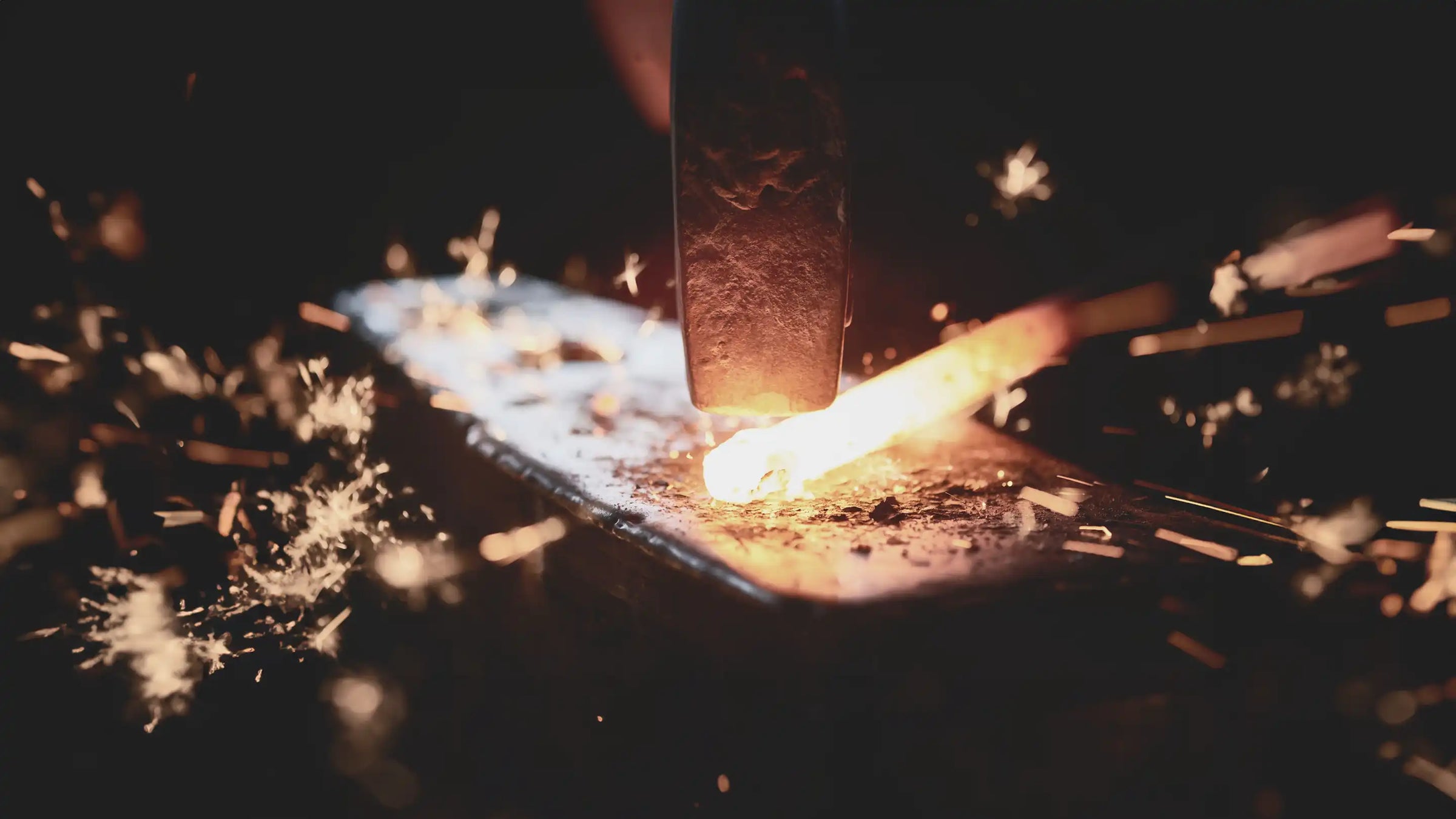
Steel Type Guide
Learn more about our steels.
Shall I compare thee to a carbon steel?
Thou art more lovely and more rust-resistant. Kitchen knives are made from a variety of steels, ranging from stainless to high carbon and everything in between. Each steel type has its own attributes, strengths, and weaknesses.
There is a lot to learn about steels—it can be quite overwhelming. That’s why we’ve put together this guide to break down the different steel types in a clear and easy-to-understand way.
Steel Categories
Stainless vs. high carbon steel
Steel types are generally divided into two categories, stainless steel resists oxidation and rust, and high carbon steel has a higher carbon content, so it stays sharper better, but it is more susceptible to rust and damage.
Generally speaking, stainless steel is softer and more durable, so it is easier to maintain, and high carbon steel requires more care, but stays sharper better. Powdered stainless steel is a newer technology that resists stains like stainless steel and stays sharp like high carbon steel.

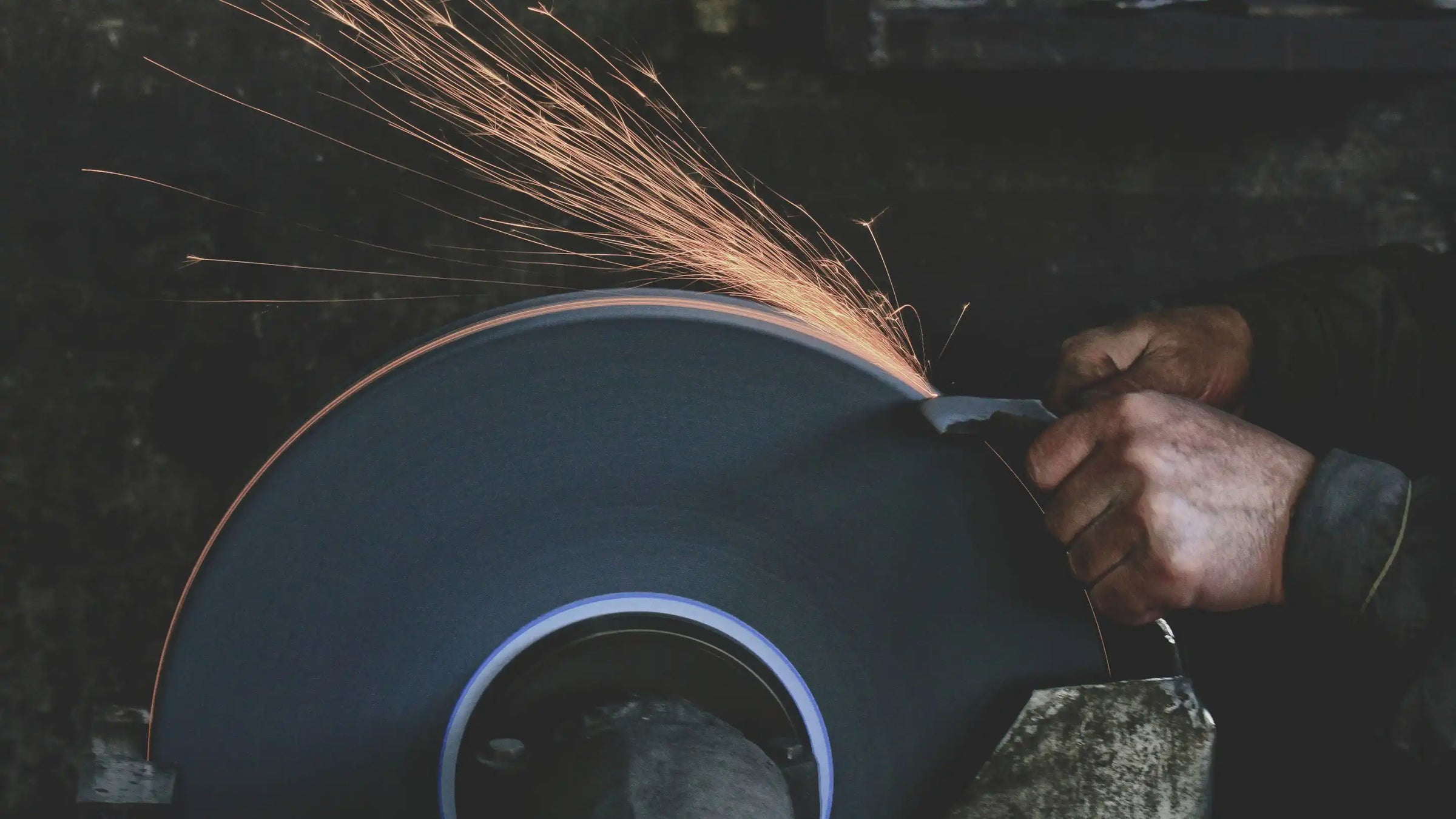
Steel Type Category
High Carbon
What is High Carbon Steel?
High Carbon Steel is an alloy composed of iron and carbon, with a carbon content of approximately 2.0%. Unlike stainless steel, high carbon steel lacks elements that inhibit corrosion, making it susceptible to tarnishing and rusting. High Carbon Steel has a long history in Japan, where master knife makers harden it to provide optimized edge sharpness, edge retention, and ease of sharpening, making it an ideal steel for skilled and experienced users.
Carbon steel requires additional maintenance but is favored for its inherent benefits. Known for its superior sharpness, edge retention, and ease of sharpening, high carbon steel knives require special care as they are prone to damage and rust.
High Carbon Steel Types
Blue Steel No.1, an iteration of aogami ("blue paper" steel), boasts superior edge sharpness when compared to other variations of blue steel. This type of steel, very similar to shiogami ("white paper" steel), is composed of chrome and tungsten and is frequently used to forge high quality Japanese kitchen knives.
Shop Now.
Category: High Carbon Steel
HRC: 58-60
Blue steel, referred to as Aogami ('Blue Paper' steel) is comparable to its White Steel or Shiogami ('White Paper' steel) counterpart with the addition of Chrome and Tungsten. Blue No.2 stands out due to its impressive edge retention and hardness.
Shop Now.
Category: High Carbon Steel
HRC: 63-65
Blue Super is a form of blue steel, often referred to as aogami ("blue paper" steel), that is substantially similar to its sister variety, the white steel (or shiogami, "white paper" steel), to which chrome and tungsten have been added. This steel is further enhanced with the addition of molybdenum and vanadium, resulting in superior edge retention that has made it a popular choice for many craftsmen.
Shop Now.
Category: High Carbon Steel
HRC: 63-64
White Steel, also known as 'Shirogami' (meaning 'white paper') is renowned for its close similarity to traditional steel. Comprising of very few impurities, such as phosphorus and sulfur, White Steel is renowned for its excellent edge retention yet is prone to rusting.
Shop Now.
Category: High Carbon Steel
HRC: 65+
White Steel No2
White Steel No.2 is the most popular variant of White Steel, featuring mid-range hardness and providing a great balance of practical qualities. White Steel, also known as 'Shirogami' (meaning 'white paper') is renowned for its close similarity to traditional tatara hand forged steel. As such a pure steel, White Steel is renowned for its excellent edge retention though is prone to rusting and damage.
Shop Now.
Category: High Carbon Steel
HRC: 60-61
Honyaki is a method of creating Japanese blades by using clay to produce differential heat wear to the same steel. Rather than crafting a blade from layers of both harder and softer steel, honyaki blades are all constructed from the same steel - white steel, or shirogami also known as 'white paper' steel - creating a blade that holds an edge unrivaled in quality though highly vulnerable to rust. This technique is exceedingly challenging to execute, with an success rate of only 10%.
Shop Now.
Category: High Carbon Stee
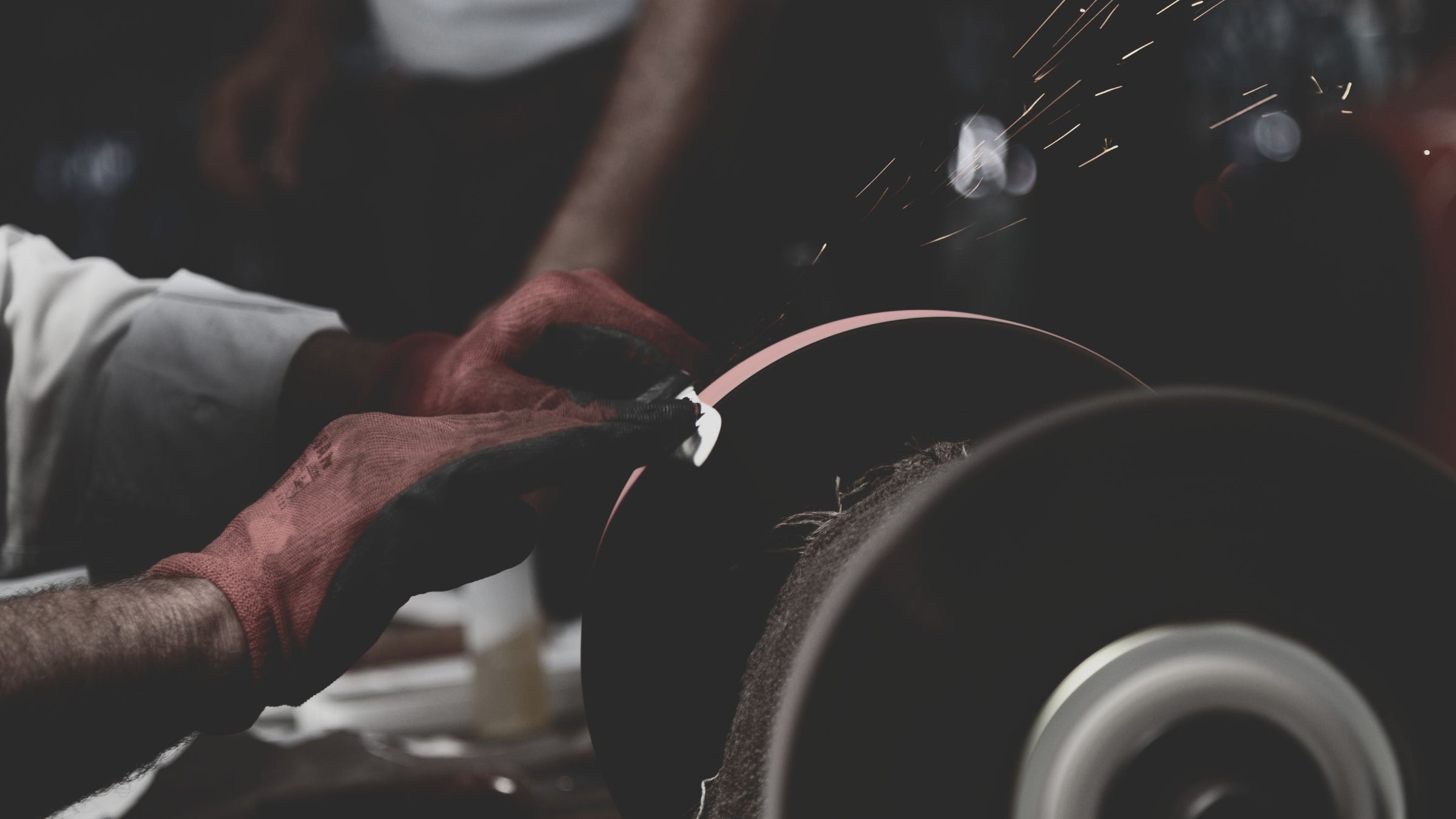
Steel Type Category
Stainless
What are Stainless Steels?
Stainless steels possess properties that make them resistant to staining and rust. Compared to other stainless steels, those made in Japan typically have a higher carbon content. This higher carbon content makes Japanese stainless steels sharper and less prone to dulling, though it also makes them more delicate and slightly less stain-resistant.
Sharp, reliable, and built to last, these steels offer an effortless cooking experience with minimal maintenance.
Stainless Steel Types
VG10
VG10, also known as V Gold 10, has earned a reputation for being a high-grade stainless steel with excellent cutting properties. Manufactured by Takefu Special Steel Company, VG10 is favored for its balance of hardness and durability, as well as its enduring edges and resistance to chipping in comparison to other Japanese steels.
Shop Now.
Category: Stainless Steel
HRC: 60-61
AUS10
AUS10 is a popular, tested and tried stainless steel for kitchen knives produced by Aichi Steel Company. Is a great introductory steel to Japanese knives, as it is easy to sharpen, very durable, rust resistant, and is usually reasonably priced. Compared to AUS8, AUS10 has better performance, edge retention and ability to hold a sharper edge.
Shop Now.
Category: Stainless Steel
HRC: 59-60
AUS10 is a popular, tested and tried stainless steel for kitchen knives produced by Aichi Steel Company. Is a great introductory steel to Japanese knives, as it is easy to sharpen, very durable, rust resistant, and is usually reasonably priced. Compared to AUS8, AUS10 has better performance, edge retention and ability to hold a sharper edge.
Shop Now.
Category: Stainless Steel
HRC: 59-60
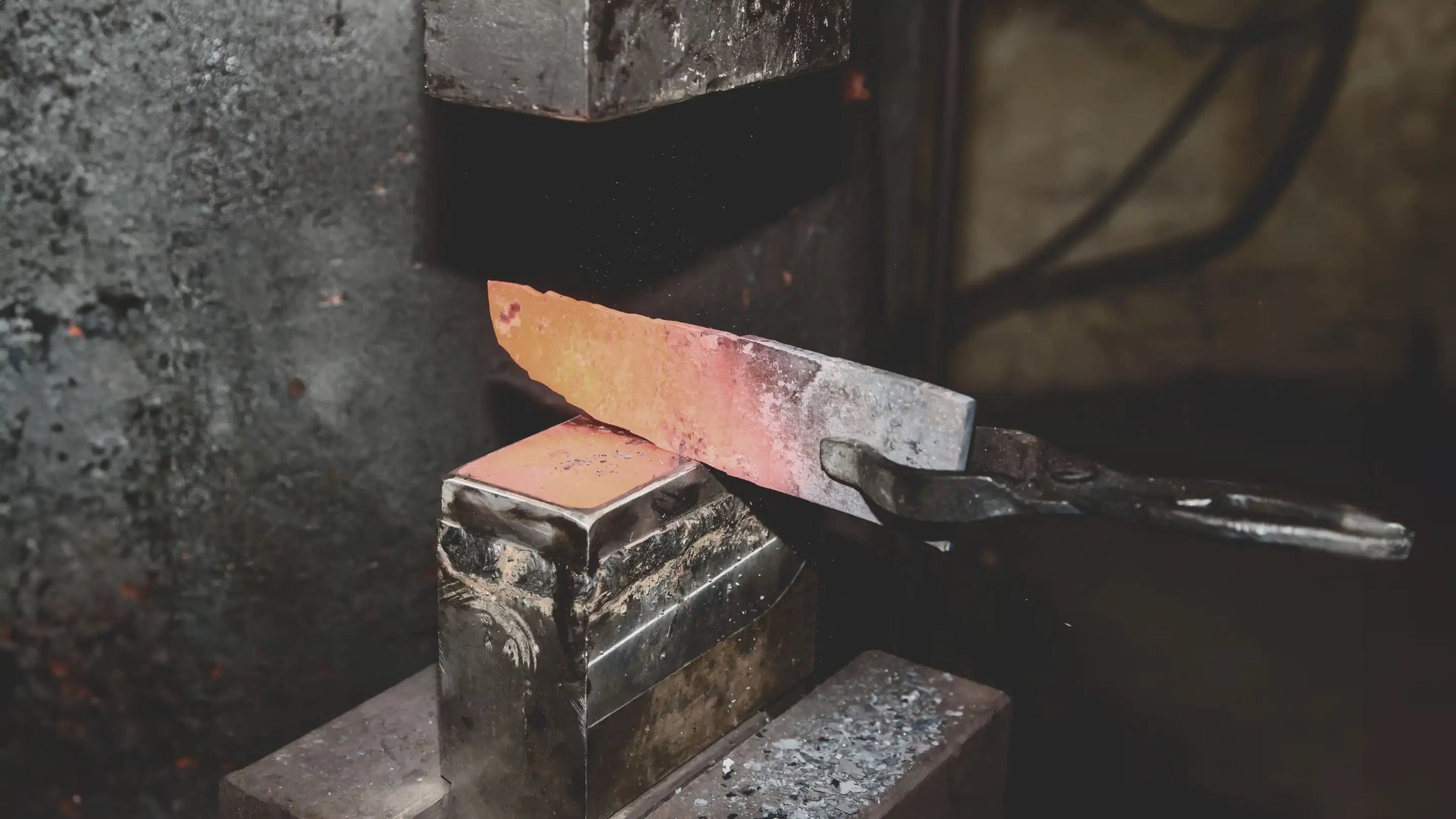
Steel Type Category
Powdered Stainless
What are Powdered Stainless Steels?
Powdered Steels are high-alloy, stainless steels that have been ground into a highly refined powder form and then sintered back together. This specialized process creates a more uniform grain structure in the steel, resulting in exceptional edge retention and hardness.
These steels provide the combined benefits of rust resistance and exceptional sharpness. However, they require more effort to sharpen than high carbon steels and are less durable than traditional stainless steels due to their increased hardness.
Terms to Understand
Hardness
The degree of hardness of steel largely depends on the amount of carbon it contains; the higher the carbon content, the harder the steel is.
The Hardness Rockwell C scale, or HRC scale, is widely used when measuring hardness. The majority of kitchen knives will measure from 52 to 68 HRC, with Japanese steels usually situated at the upper end between 58–68 HRC.
Durability
The ability to withstand damage from bending, twisting or cutting is referred to as durability, with softer steels displaying greater flexibility while harder steels are more prone to brittleness.
Durable steels may not be as sharp as harder materials, however, they are ideal for demanding tasks. When cutting tough materials such as winter squash, cheese and bone, using a highly durable knife is recommended to minimize the risk of chipping.
More Terms
Sharpness
The sharpness of a knife is determined by a few factors, chiefly the hardness of the steel at the blade's core. Harder steels can be sharpened to a finer edge while also retaining said edge better than softer steels, which should be ground at a greater thickness.
It is also important to consider the grain structure of the steel, as a finer grain structure results in a more acute edge. By refining the grains of the steel, it is possible to achieve a sharper cutting edge
Edge Retention
Edge Retention is a measure of a steel's ability to maintain a sharp edge over time. It is dependent upon the hardness of the steel itself, with harder steels being able to sustain a sharp edge for prolonged periods of time due to their superior hardness in comparison to softer steels.
Japanese steels boast superior edge retention in comparison to other steels, with some varieties being capable of retaining their sharp edge over a period of up to a year prior to needing to be sharpened.




































